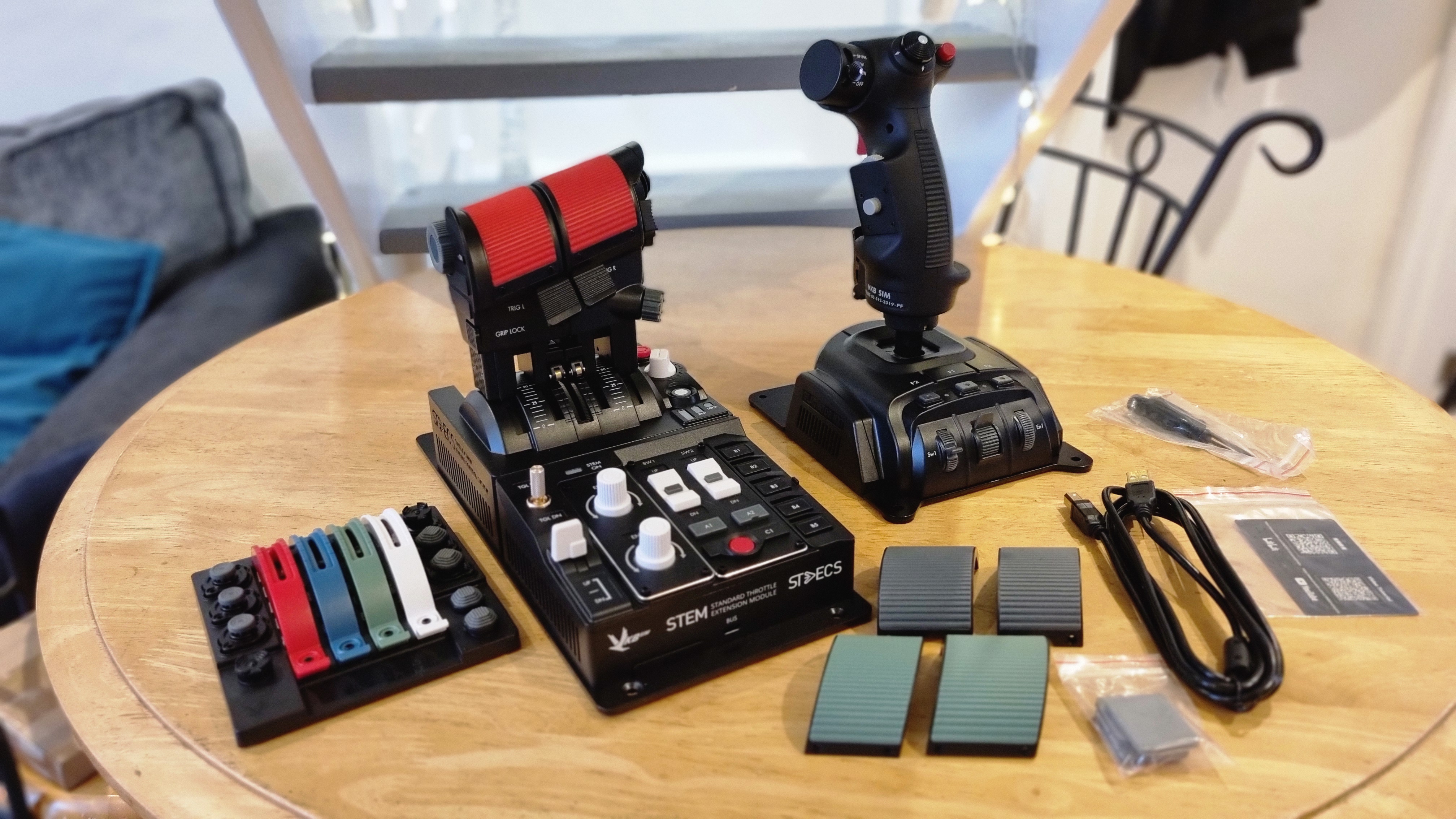Our Verdict
If you really want to get serious about flight sims, these VKB peripherals are about as good as they come. For those looking for a more casual experience, however, this is likely to be a step too far.
For
- Astonishing modularity
- Superb build quality
- Some of the best feeling mechanisms I've ever used
- Spare parts for days
Against
- Pricey when specced up
- Optional mounts are fiddly to construct
- Software is fiendishly complicated
- Not for casual usage
PC Gamer's got your back
There's a brand name that comes up fairly often on flight sim forums when discussions turn to controllers, and it's VKB. Its modular approach to flight sim peripherals means you can swap in and out various bases, grips, throttle controls and add-ons to create a plethora of potential flight controllers, and as a result, it's a company that has become highly regarded among those who take this sort of thing seriously. Difficult customers to impress, no doubt.
What I found truly impressive, however, was the size of the box that reached my door when I asked to review one. Rather than receiving a basic model, I was instead astonished to unbox a dizzying array of components that are designed to fit together in different ways for different sim experiences.
Rather than writing the longest review in PC Gamer history, I've decided to focus on what I reckon is likely to be the most popular combination for flight sims. For the stick itself, that'd be the VKB Gladiator NXT Base Module in combination with the F14 Tomcat Grip (VKB will sell you this as a bundle, called the Gladiator NXT EVO F-14 Combat Edition, for $175/€181) and the STECS Throttle System, a single/twin engine control system available for $279/€286.
That's a total of $454 (minus shipping) for a set of flight controls that should get most people going in the wonderful world of flight simulation. Not cheap, I'll grant you, but the unboxing experience immediately lets you know that you're dealing with some serious kit. Beautifully presented packaging, with heavy-duty foam. Individual little Ziploc bags, clearly marked with screws, springs and components. So many individual bags, in fact, that I prepared myself for the long haul when it came to putting it together.
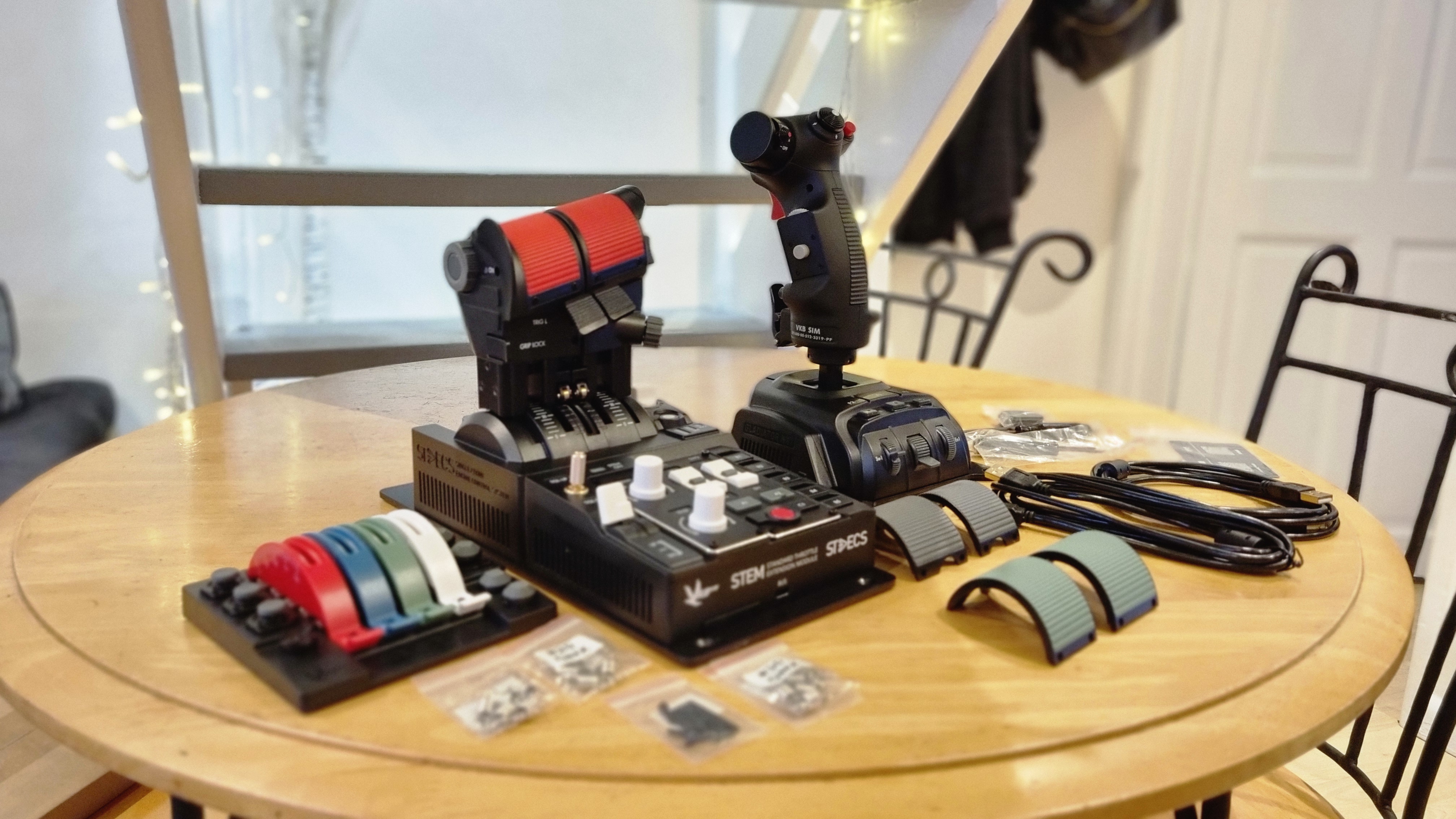
Type: Flight stick, twin throttle control and optional mounts
Connectivity: USB Type-A
Stick + base controls: (Stick) Lockable rudder axis, direct lift control, 1 x hat switch, 1 x dual-stage trigger, 1 x four stage ammo selector, 4 x programmable buttons. (Base) 2 x contactless sensors, 1 x 3-position switch, 1x throttle wheel, 1x rotary encoder, 3 extra buttons
STECS throttle controls: (Twin throttles) 4 x triggers, 2 x wheel encoders, 4 x buttons, 1 x analog ministick w/ centre push, 1 x analog wheel axis (STEM module) 8 buttons, 2 x K-switches, 2 x encoder w/central push, 1 x 3-position flip switch (STECS Base) 2 x Analog Axes, 2 buttons, 1x 5-position rotary switch
Extra features: Spare springs, screws and parts galore
Price: Stick + base: $175/€181, STECS Throttle System: $279/€286, optional mounts: $99-$109 each
I shouldn't have worried, at least not initially. Attaching the F-14 grip to the base is a simple matter of sliding it into place, inserting and tightening four screws (with a handy included screwdriver), and clipping in a cable, before attaching the baseplate. So what are all these extra gubbins for then?
Oh. They're spares, including replacement springs with different degrees of tension. Several are provided, along with an optional insertable locking system to block off rudder movement and so many extra screws I thought I might be missing something. Comprehensive, no doubt, but more than a little disconcerting to the first-time builder.
The STECS throttle system, on the other hand, comes as one pre-built unit—and it's a beast. Pulling it from its heavy-duty foam casing, I mentally prepared myself for more assembly, as there were plenty of components left in the box. Nope, these are more optional extras—this time, several different colours of throttle control grip plates, with matching coloured pieces that assemble at the bottom of the throttle base for colour coordination. Oh, and multiple replaceable hat caps, too.
What I've been left with after all that faff are two seriously good-looking bits of equipment. Some flight controls are in danger of looking like toys—but the VKB kit looks like it'd slot into the most high-end of flight-sim setups, if not a real plane itself. But it's the feel of the things that impresses most.
The throttle action of the STECS is exquisite. I've had the pleasure of using all sorts of fabulous-feeling mechanisms over the years, but never have I made an involuntary noise like I did when I first slid the twin throttle controls forward here. It's beautifully dampened, with a heavy, smooth, lubricated throw that sends a wave of sensation up your arm.
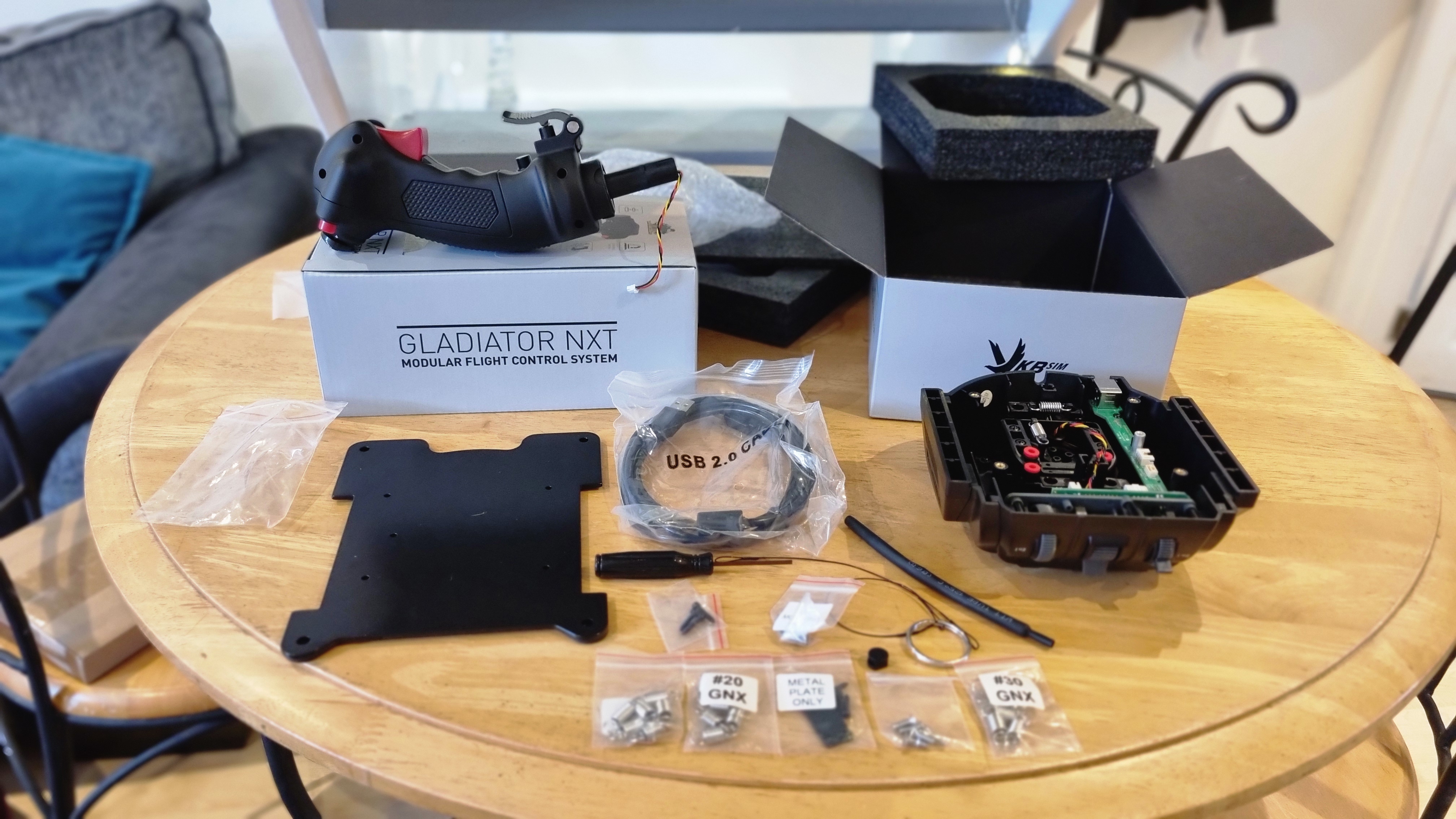
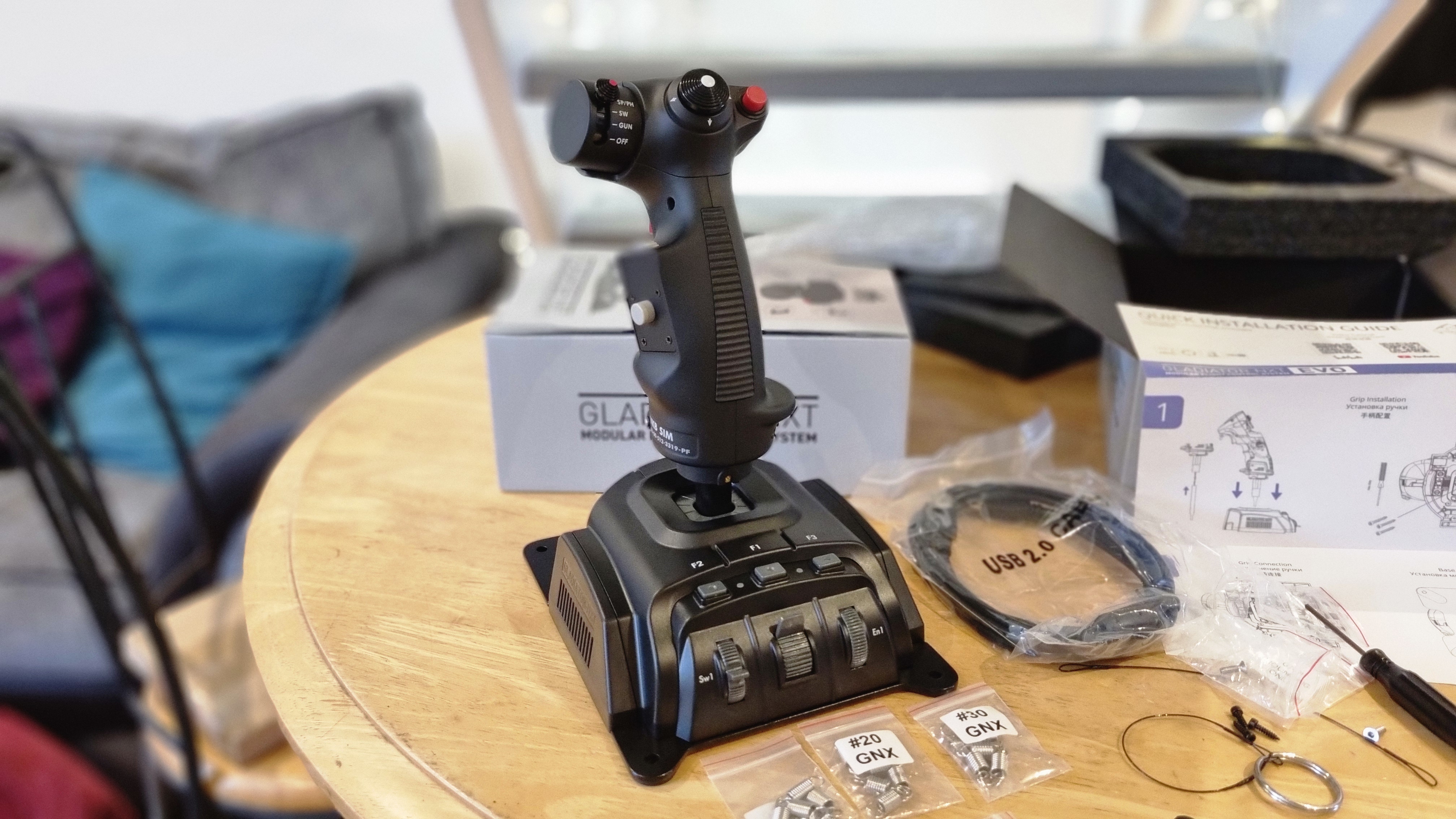
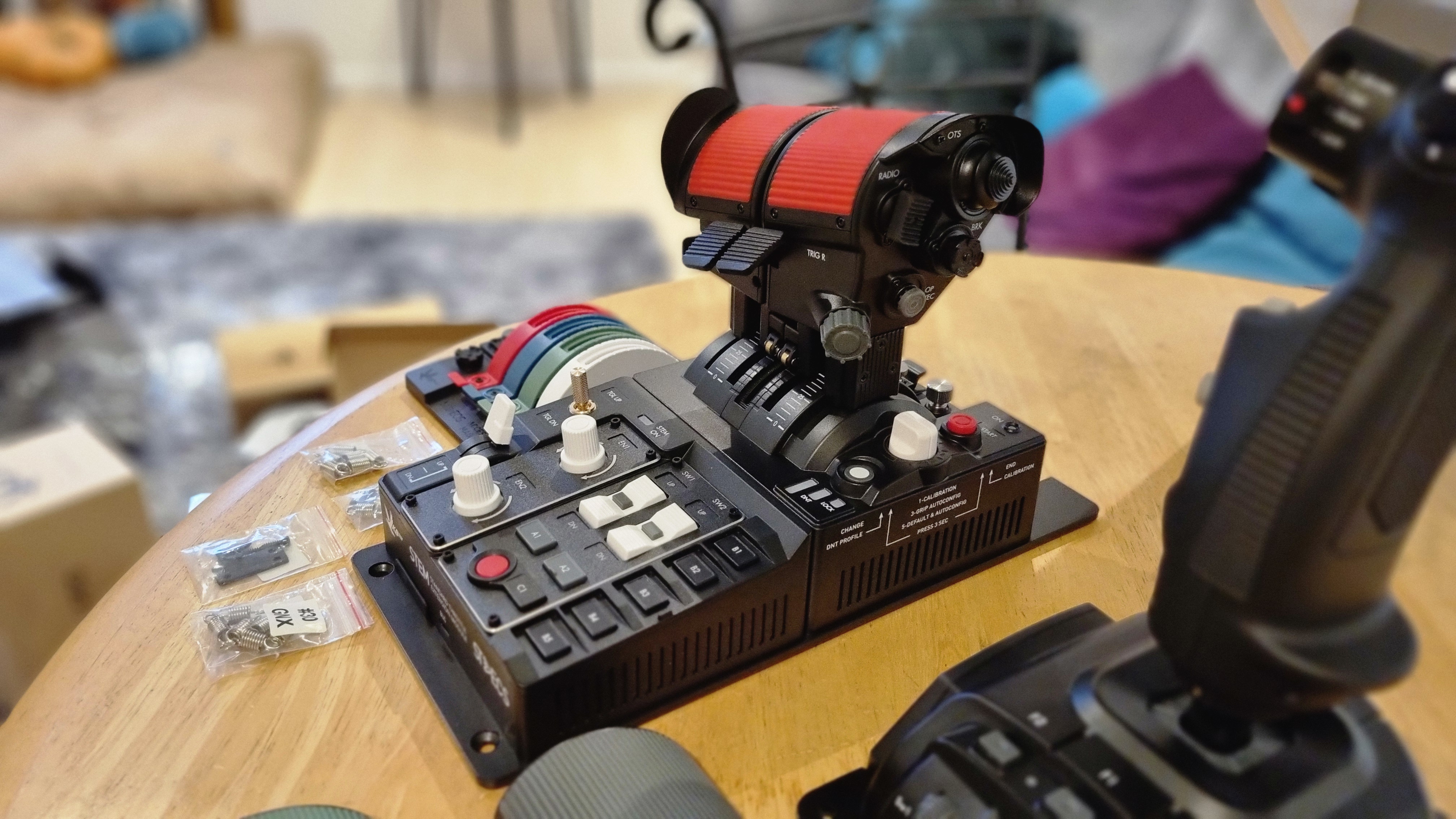
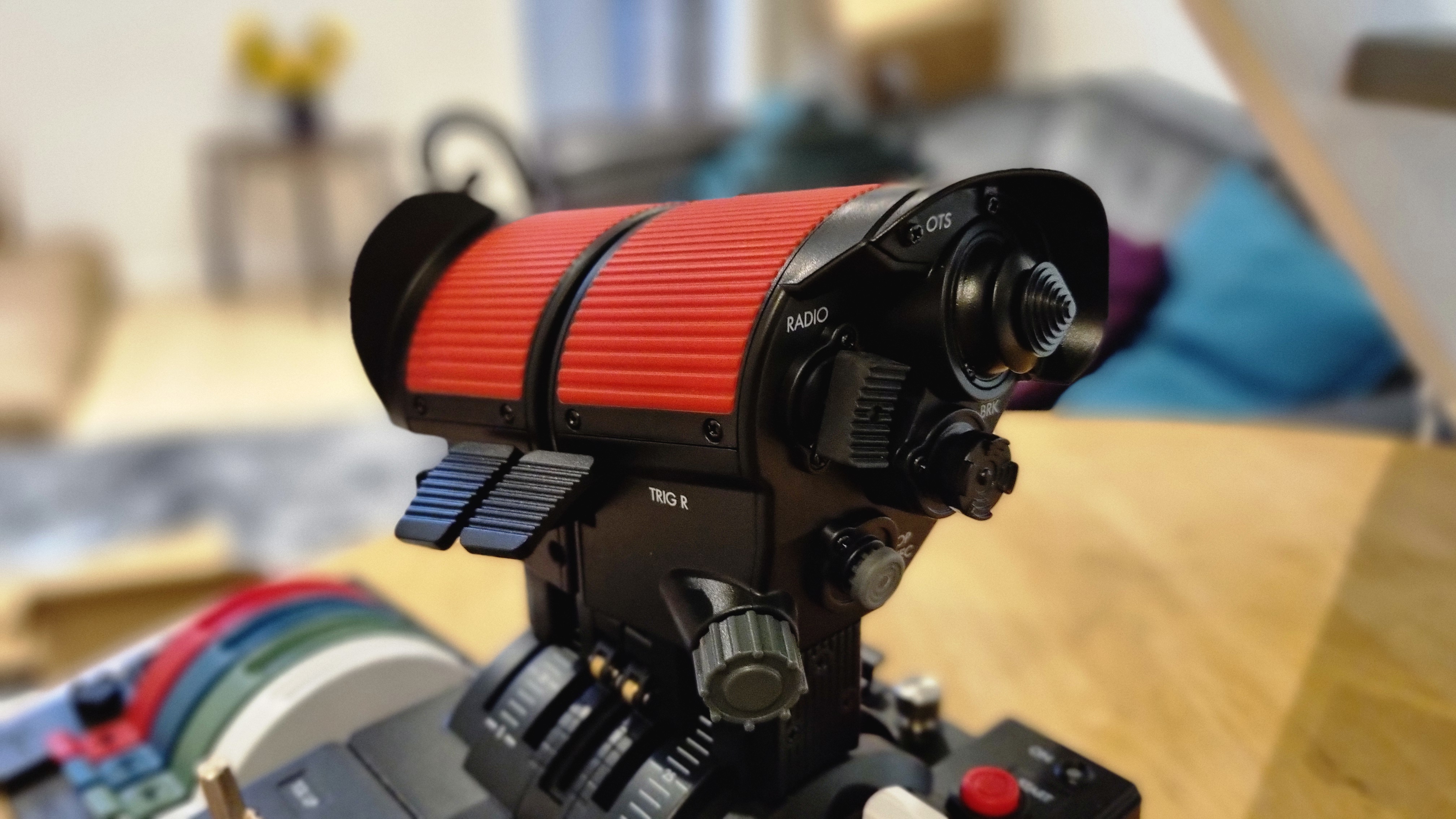
More than that, the STECS system is covered in clicky buttons, clunky toggles, switches, paddles and other fantastic-feeling objects that I'm not quite sure how to describe. I'll list them here for the purpose of accuracy, but my goodness there are a lot of them.
Starting from the top, on the left throttle grip there are two buttons, two triggers and two wheel encoders. On the right, however, things get really complicated: two triggers, one analogue mini stick with centre push, and one analogue wheel axis. Then there are the pre-configured button modules, with two more buttons, one three-position hat and two five-position hats.
And we haven't even got to the module underneath, and the base. That's got eight buttons, two K-switches with central push buttons, two encoder dials (also with central push), a three-position flip switch, another five-position rotary switch and…do you get the idea?
Then there's the flight stick itself. This also feels fabulous, with a smooth, lightly-weighted action that's easy to flick around and it centres itself perfectly thanks to a fibre-glass reinforced internal gimbal and those aforementioned replaceable springs. Here you get a lockable twist rudder axis, a lift control axis, one hat switch with push, a dual-stage trigger, a four-stage ammo selector with safety lock and push button, and four extra programmable buttons.
I'll be honest—I've never felt more out of my depth with a set of peripherals in my life. Thankfully, VKB has a whole YouTube channel dedicated to setting all of this up exactly how you like it, but I gamely decided to simply plug both the controllers in, install the configuration tool, boot up DCS World, and see how I got on figuring it out myself.
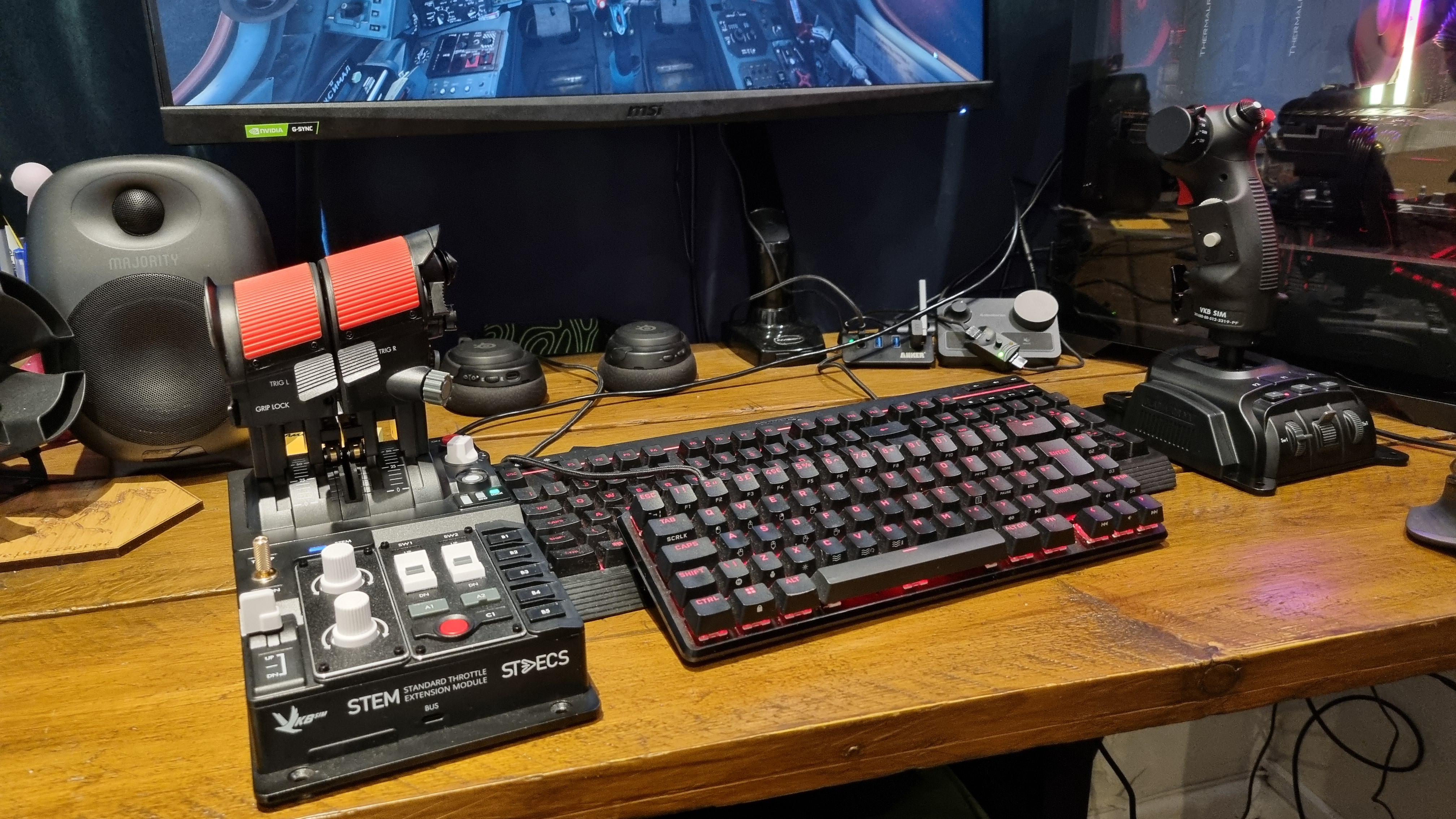
Learn from my hubris, dear reader. This was a mistake. After a bit of fiddling, I'd managed to get some usable flight controls configured, but what I really needed to do was spend some time dipping into both the VKB and DCS World forums to try and get a good config going. There's a wealth of info available, not least from VKB itself, but be assured: this is not exactly a plug-and-play experience, at least if you're going to get the most out of it.
MSFS 2020 is easier, of course. That's a game that's much more straightforward to set up than your average flight sim, although given all the control options here I still occasionally find myself banging into the wrong nubbin or forgetting quite which option I've mapped where. Human error, for sure, but the control options here have so many possible configurations, that it can be very easy to get lost.
What doesn't help here is the monstrously unintuitive configurator software. I'm pretty sure I could spend the rest of my life messing around with the options, and if you're a proper flight sim fanatic then that may well be time well spent. For the rest of us though, be prepared to take it on as a genuine project in and of itself. It's not strictly necessary to get the basic controls working, which is just as well, but it does feel like a program that would have been out of date in 1997, never mind 2024.
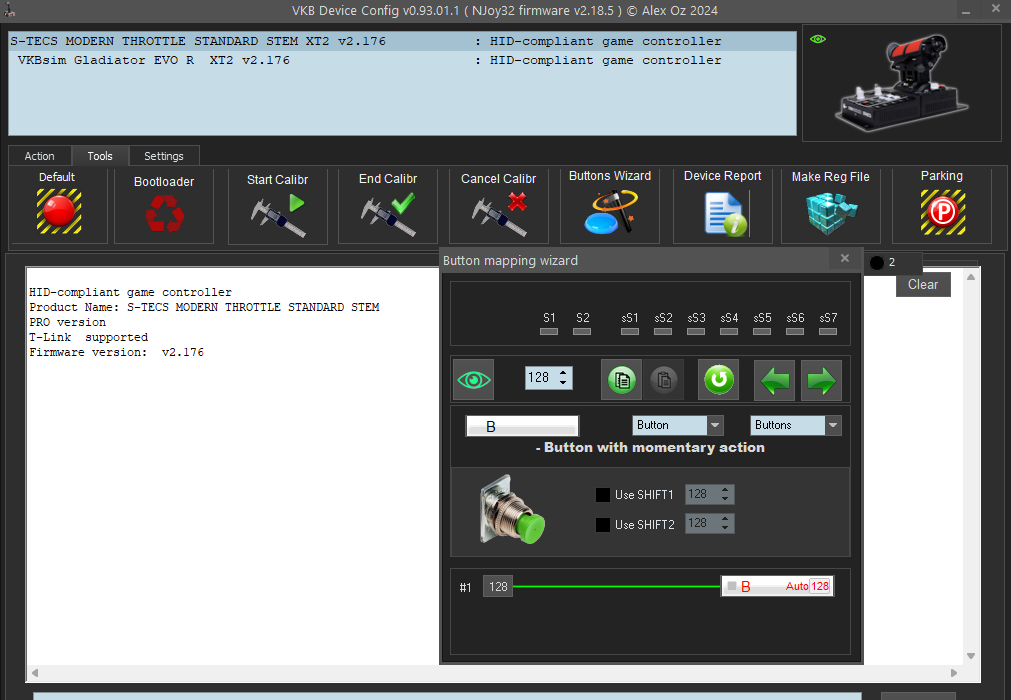
So, if you're wondering whether you should invest in the VKB Gladiator NXT EVO F-14 Combat Edition and STECS Throttle System for casual flight sim fun, you can stop right here: this is a truly stunning set of peripherals but damned complicated to get the most out of. The Thrustmaster HOTAS Warthog is also a brilliantly made flightstick and throttle combo, and while it doesn't have nearly as many options as the VKB, there's something to be said for keeping things simple.
Still, buttons mapped and controls calibrated, we'd better take to the skies and see what these fiendishly complicated monsters are like in action. VKB did provide me with two desk mounts (which I'll get on to later), but for initial testing, I chose to stick both controllers on my uneven desk and see how I got on.
...this isn't merely a set of input devices, but the start of an obsession
Surprisingly well, is the answer. Both of these units are heavy enough that they resist sliding around to a reasonable degree, with sticky feet that provide a lot of grip. And as for the feel of simply screwing around, dive-bombing scenery and enjoying the experience of flight? The VKBs are pretty stunning. Smooth, refined, and accurate, to the point where I often find myself grinning like an idiot just throwing a plane around in the air.
It's not all plain sailing, however: at an estimate, I'd say that 90% of the buttons, hats, and switches feel fabulous, but there are a few outliers. The two grey rotating dials on the throttle base are a little flimsy feeling compared to the others, and there are a couple of buttons on the stick that are a touch hollow. The dual-stage trigger is good, very good in fact, but it's a tad light under the fingers. I'd prefer just a little more clunk to the action—but as light as it is, it still feels positive and well-made.
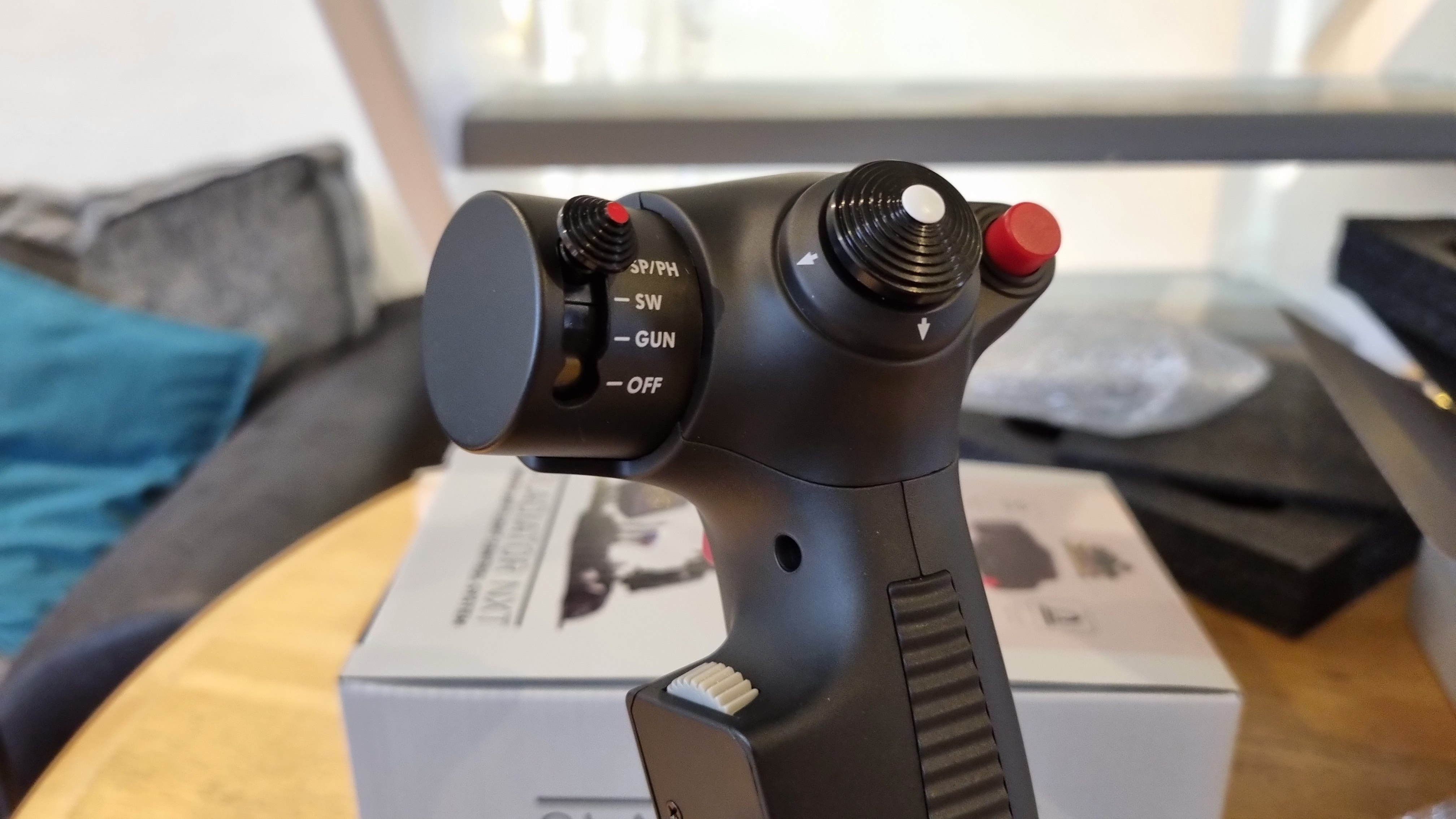
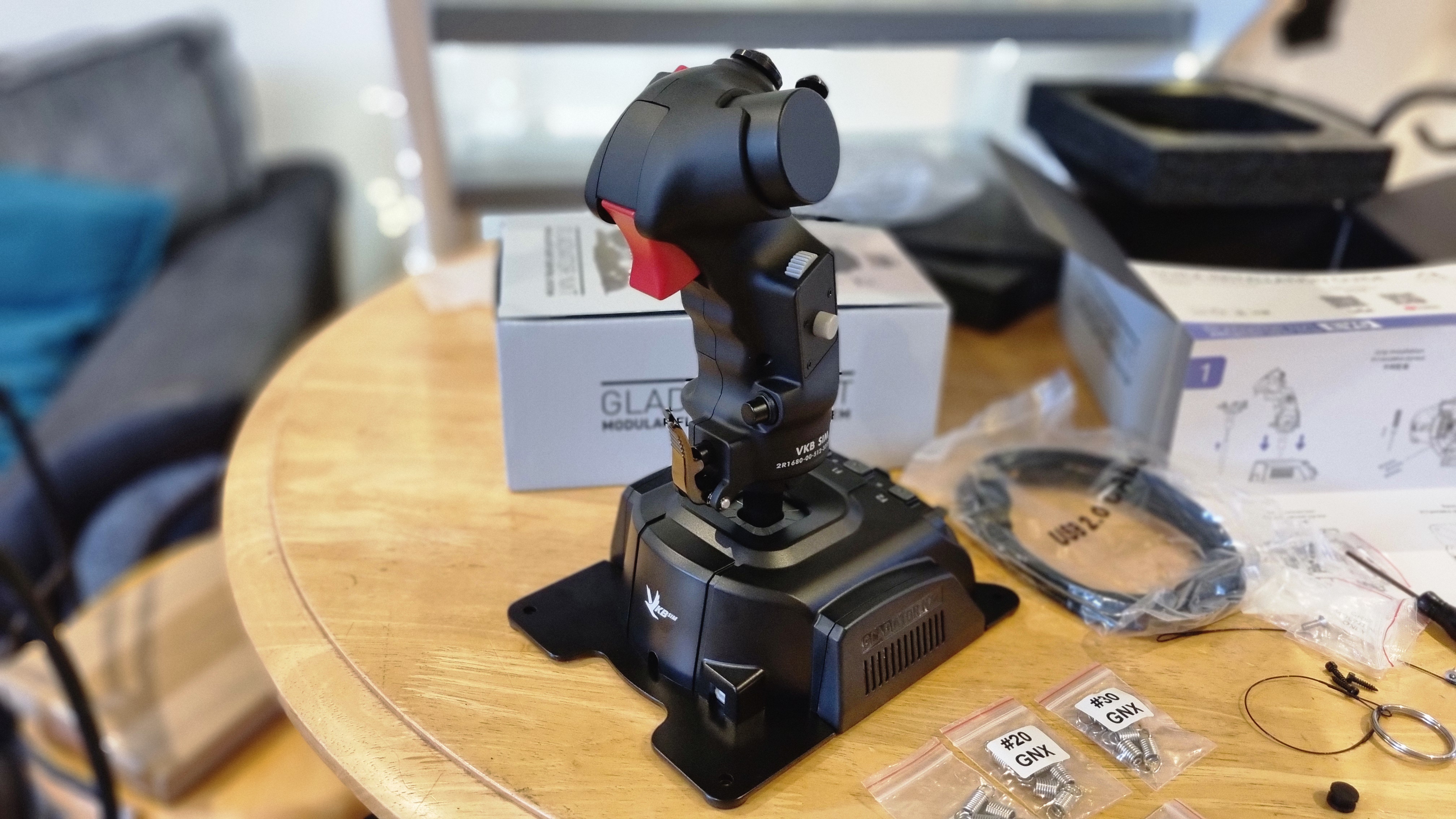
Still, for every slightly niggling control, there are ten more that feel exceptional. That four-way weapons selector on the stick is a real highlight. It delivers such a satisfying mechanical thunk as you switch between positions, it's positively rude. That's about as good a control as I've ever felt, and one that I find myself absentmindedly playing with as I write this review.
What you're really buying here is an entry point into proper flight sim setups, and to that end, VKB also provided me with two UCM Stronghold mounts—one for the flight stick, and one with an extra adapter plate for mounting the STECs throttle system. The mounts themselves are available for $99-$109 (depending on the configuration needed), which adds a fair bit of expense to the setup overall.
The assembly required here is much more involved than I would like. Both the mounts ship screwed together in a way that means you need to disassemble them entirely before configuring them, and this led to a fair bit of head scratching. Not only that, but you need to replace the bottom plate of the throttle assembly, and switch the metal bus socket mount with a separate plastic model. Again, I found myself surrounded by Ziploc bags, hex keys, washers and screws.
What I've been left with afterwards though…well, I'll let the photos do the talking here:
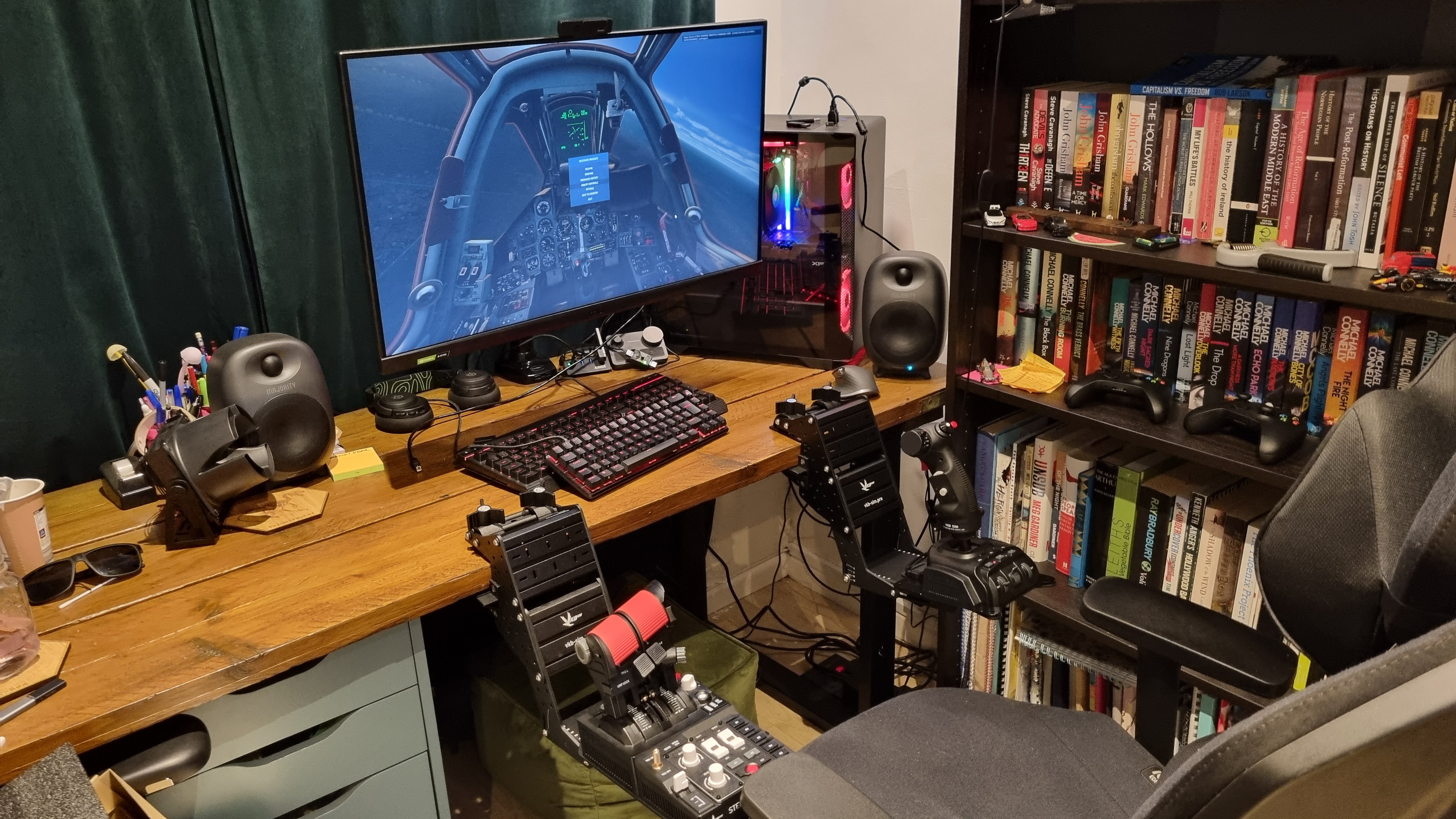
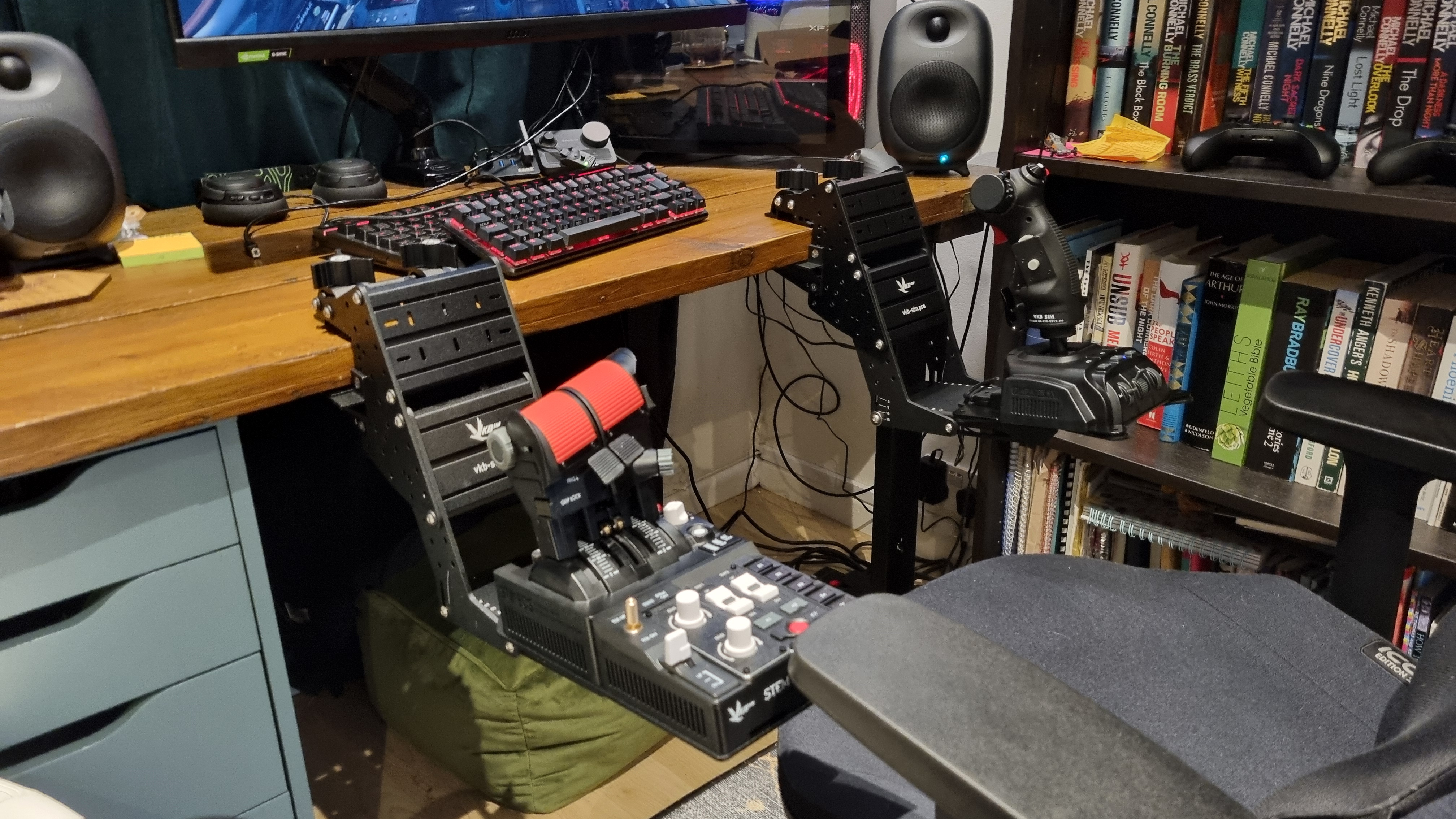
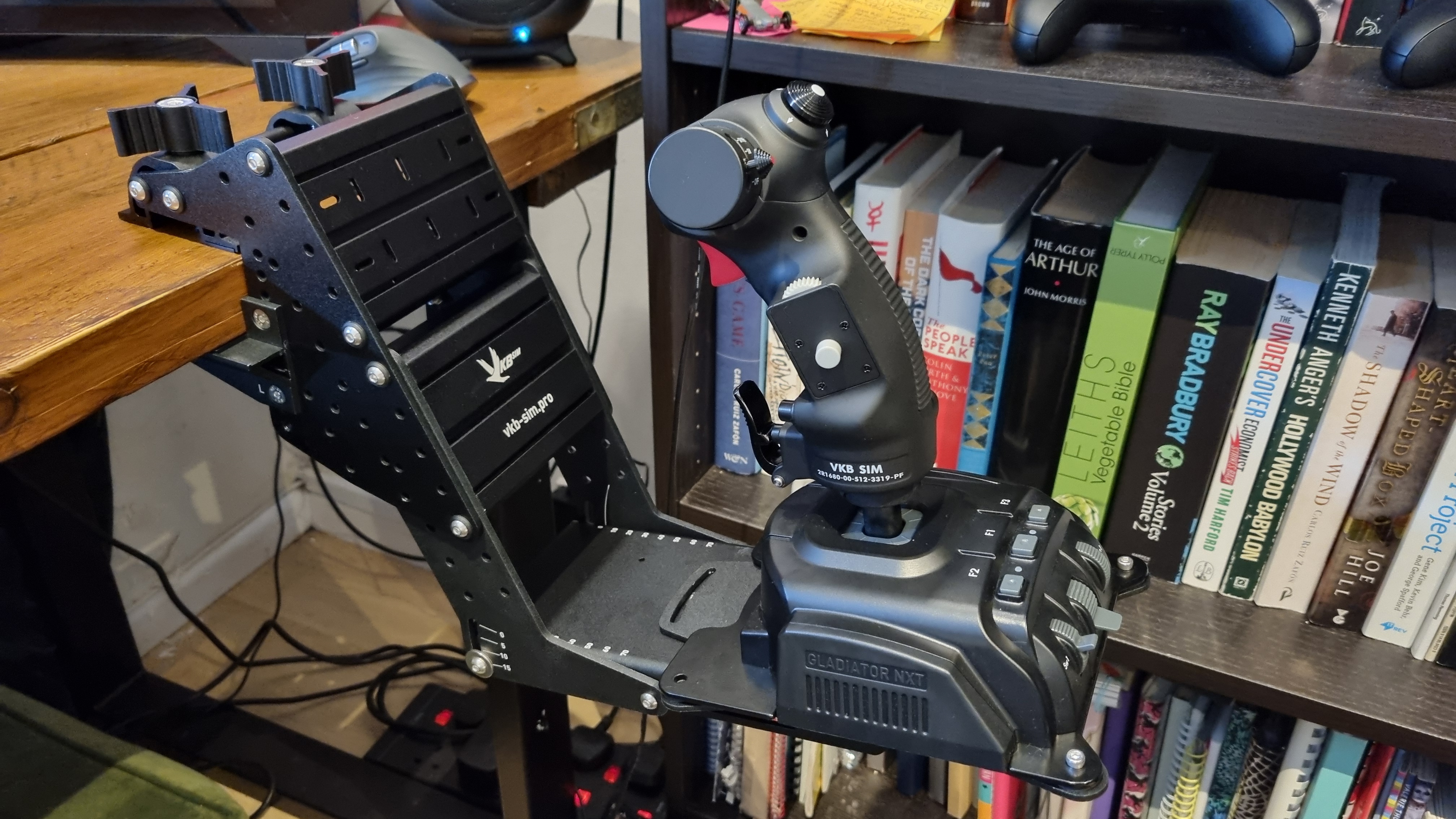
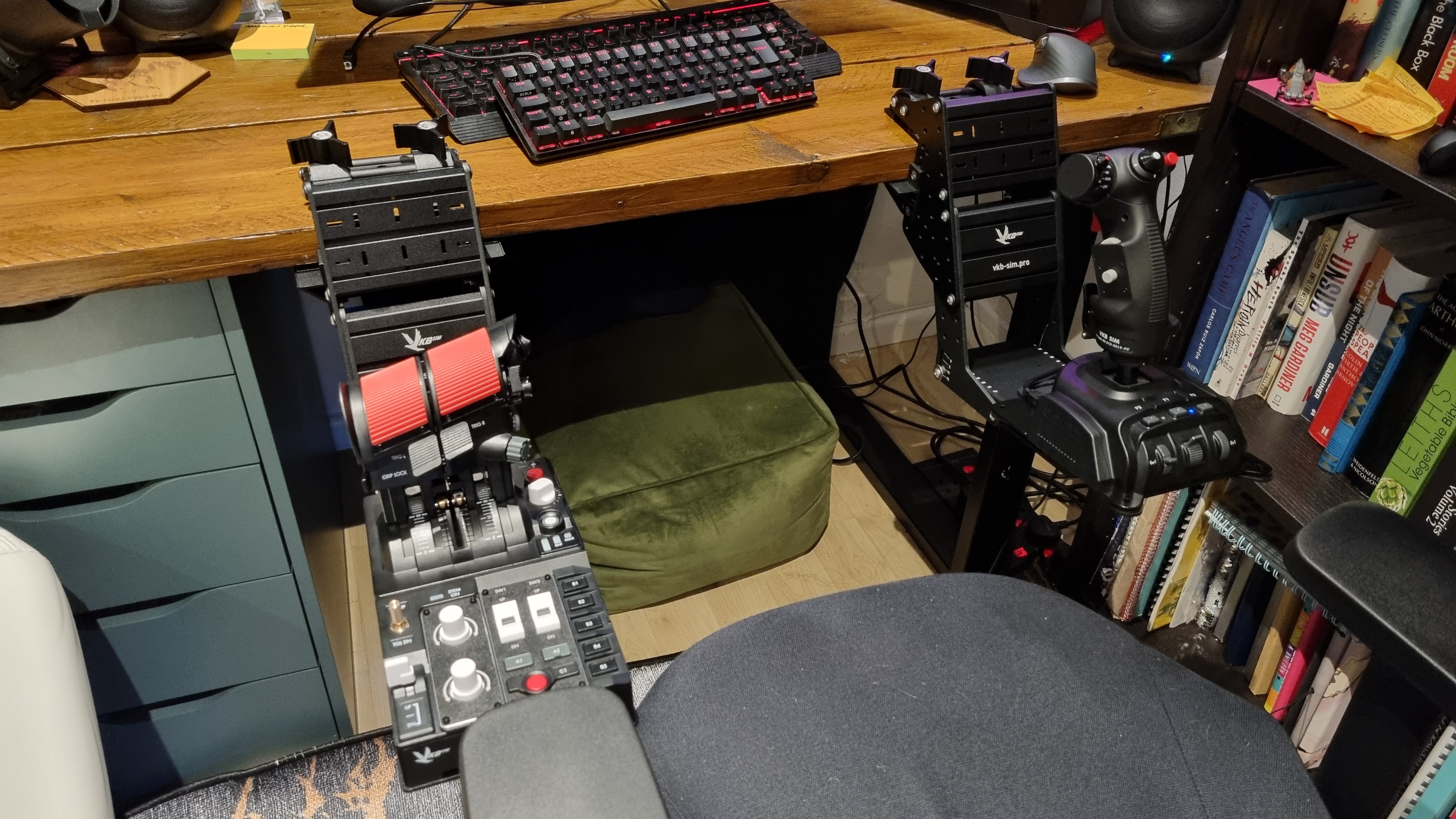
Yep. That's about as close as you're likely to get to a real fighter-jet style setup attached to your rig, short of building your own cockpit. Which, to be honest, is what these mounts feel like in usage. They're extremely robust, and by dropping the controls down to a lower position, really do provide an extra dose of realism to the experience.
✅ You want to get serious about flight sims: The VKBs are not for the faint of heart. That being said, they provide so many options, you'll likely never need another flight-control system again.
✅ You want excellent feeling controls: Both the throttle action and stick feel are superb, along with most of the switchgear and buttons, too.
❌ You're just looking for some casual fun: Be prepared to break out the screwdrivers and spend a few hours pouring over forums to get the most out of these brilliant, but fussy controllers.
❌ You're on a budget: While I'd say they're well-priced for what you end up receiving, if you just want some quick thrills for cheap this is likely to be more than you need to spend.
Should you wish to take things even further, however, VKB is ready for you. The list of add-on components here is nothing short of staggering, and while you're likely to spend hours fiddling with endless screws, bolts, washers and configs in order to get it all set up, the modularity here means you'd likely never run out of options.
One thing is abundantly clear to me after spending some time with the VKBs: this isn't merely a set of input devices, but the start of an obsession. Yes, you can stick to those two controllers and have more than enough stick and throttle controls to cover most bases. But with the addition of the mounts, you've got the template for a flight sim rig that you can customise to your heart's content.
It really depends on how deep you're prepared to go. The further I go with the VKB set, the more I realise that these are different products entirely from what I think of when I imagine gaming peripherals. What you get here is an ultra-modular Rubik's Cube of flight sim delight, and something that'll go as far as you're willing to take it. But it'll make you work for it, almost every step of the way.
What you're left with though, other than a headache, is a complicated but truly stunning set of peripherals. Casual flight fans should look elsewhere, but if you're really looking to take flight sims to the next level, the VKB set is about as comprehensive as they come.
If you really want to get serious about flight sims, these VKB peripherals are about as good as they come. For those looking for a more casual experience, however, this is likely to be a step too far.

Andy built his first gaming PC at the tender age of 12, when IDE cables were a thing and high resolution wasn't—and he hasn't stopped since. Now working as a hardware writer for PC Gamer, Andy's been jumping around the world attending product launches and trade shows, all the while reviewing every bit of PC hardware he can get his hands on. You name it, if it's interesting hardware he'll write words about it, with opinions and everything.
